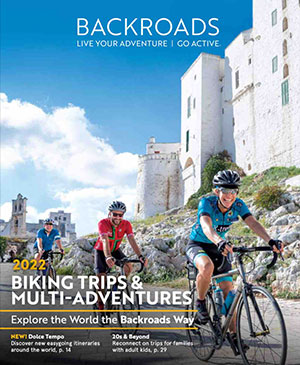One of the wonderful things about geared bikes is that they allow riders to maintain a comfortable cadence—revolutions per minute (RPM) of the pedals—over a variety of terrain. Variable gears allow for easier pedaling over mixed terrain and to maximize the power the rider exerts. If your bike is in a high gear, you won’t pedal very fast, but the amount of force you exert with each push will be great. Conversely, if you switch to a low gear, you will find it much easier to rotate the crank arm, but you will “spin” your pedals much faster. The goal is to find the middle ground—that balance between power and speed that allows you to keep going, mile after mile.

Depending on your physiology and preference you may use a higher or lower gear compared to others. Some riders prefer a lower cadence (between 75-80 RPM) while others spin faster in a lower gear. You should find the gear that feels most comfortable for you. However, it is generally agreed that spinning a higher cadence is more sustainable over long efforts. Higher cadence allows for faster recovery and does less damage to muscles. Pedaling at low RPMs with greater force puts unnecessary strain on the knees and back.
So, how do you determine how fast you are pedaling? You could count your pedal strokes against a stopwatch and extrapolate from there, but fortunately there’s another way. Most cyclometers and GPS computers allow you to measure your RPM by attaching a magnet to one of the crank arms, or using an accelerometer which calculates RPM for you.
Backroads Pro Tip
An experienced cyclist will eventually be able to intuit how fast he or she is pedaling, but the cadence feature of cyclometers is especially helpful for beginners.
How fast should you pedal? Somewhere between 75–110 RPM is generally considered a safe range. If you dip below 60, your efficiency decreases dramatically, and you run a higher risk of injury. Pedaling above 130 also decreases your efficiency and can also cause you to bounce in your seat as you pedal. Many racers typically climb mountains spinning at about 100 RPM, which is relatively high.
As you ride, you will find a cadence that is comfortable for you. The most important thing is to keep it consistent. This means shifting into lower gears when the going gets tough and vice versa for easier declines. Shooting for an RPM of 80-100 should maximize the efficiency of the incredible engine that is your body and keep you in the saddle for a long time!




